
Rescue workers are trained to assist in dire situations, and in essence, help people get out of harm's way. They are trained to perform rescue missions in technical situations, where diving is required, in mountainous regions, to extinguish fires, and to extract/rescue people facing imminent danger. Overall, they save the lives of people who find themselves trapped in dangerous environments. Rescuers typically fall under fire departments and the military.
They differ in terms of the roles they play in western and eastern cultures. For instance, in North America, rescuers and firefighters mix and share the same equipment as well as a point leader. In Asian departments, rescuers have special units with apparatuses, equipment, and even fire stations independent of firefighters. Under the military, a rescuer is a sailor or soldier with additional training in extraction, diving, and mountain rescue. Recently, a Thailand-based rescue worker stepped in and saved a non-human victim caught up in a collision.
An Inspiring Rescue Mission

We've heard about several inspiring stories from Thailand, the Southeast Asian country. In July 2018, 12 boys who were part of the "Wild Boars" football team and their coach ended up trapped inside the Tham Lung cave system located in the Chiang Rai province. The dramatic rescue that followed gripped the world.
They were found nine days after they went missing, but it wasn't until two weeks later that the group could be safely pulled out of the flooded cave system. Just recently (December 2020), yet another touching story emerged from Thailand.
The Scene Of An Accident

Man Srivate responded to a late Sunday (December 20, 2020) rescue call. Srivate, who was off duty, still accompanied his colleagues to the site of an accident involving a motorcycle. When he arrived at the scene, he saw a motorcycle driver and a baby elephant.
Motorcycle taxis are a common mode of transport in Thailand and several other countries across the globe. The bike taxi usually carries one passenger who sits on the pillion located behind the bike operator. However, it is a common sight to see one bike carrying multiple passengers.
A First In His Career
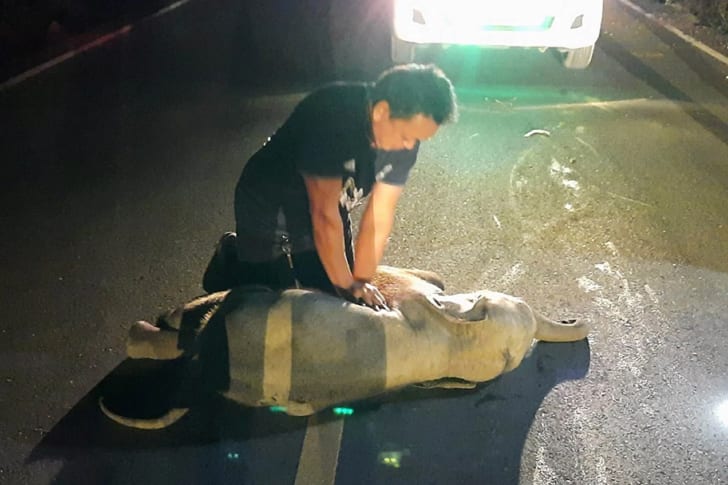
Srivate had worked as a Thai rescuer for 26 years, and he had assisted in dozens of resuscitations. However, this was the first time he encountered a non-human victim whose life was literally hanging by a thread.
According to the Thailand National Parks, Wildlife and Plant Conservation Department, the nation has a population of around 3,500 to 4,000 elephants. The wild elephant population in the country no longer faces extinction, thanks to the monitoring and intensive care extended by the DNP. You also don't hear too many cases of humans and the wild mammals having fatal encounters.
A Group Of Pachyderms Crossing The Road
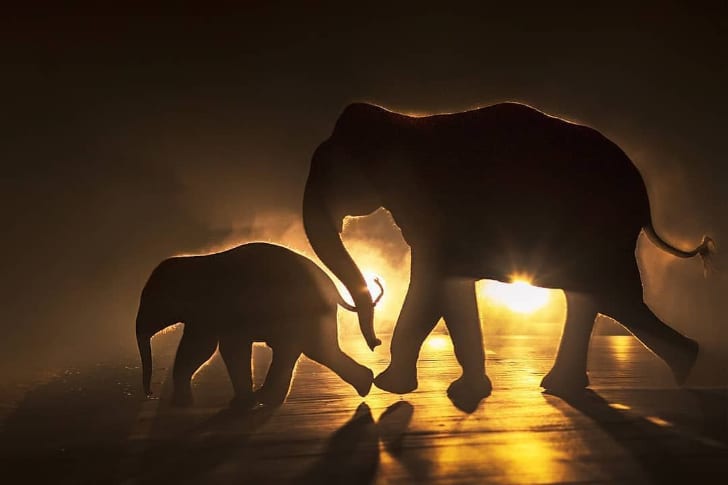
The calf had been in the company of a family of wild pachyderms that were crossing the road. That's when the calf fell victim to an oncoming motorbike driven by Anan Cherdsoongnern, 53. The incident happened on a rural road located in the eastern province of Chanthaburi.
Locally known as motor-sai rap chang or win motor-sa, the motorcycle taxis ferry passengers over short distances. They are found on taxi queues located on sois (side streets), and the land transport authority regulates them. In Bangkok, motorcycle taxi drivers have a reputation for delivering service swiftly by driving fast and weaving their way through traffic.
The Rescuers Get To Work
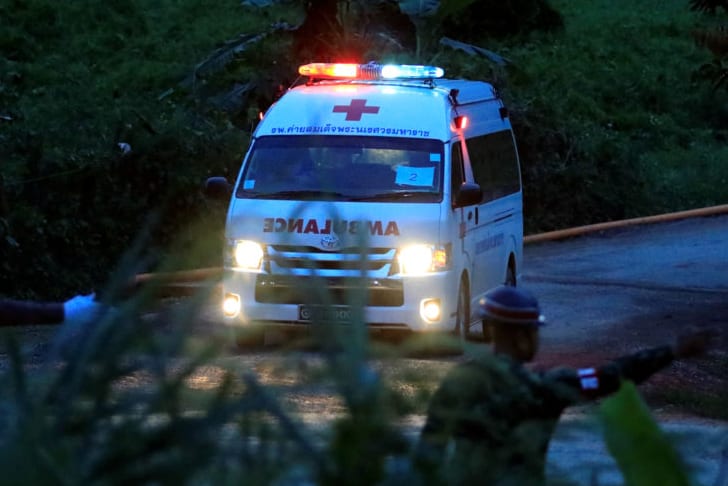
Upon arriving at the scene, Srivate's colleagues responded to the dazed and injured motorcyclist. Srivate was drawn to the calf that also needed help, and he got to work trying to revive the unconscious elephant.
Licensed motorbike taxis in Thailand have yellow number plates, and the operators wear orange vests. They also have a driving license bearing the driver's details and photo in the form of a card placed where it's clearly visible. Most will have a spare helmet for their fares as required by Thailand motorcycle helmet law, but it isn't always the case.
Keeping Watch Nearby

Srivate told Reuters during a phone interview that it's in his nature to save lives, and it didn't matter that it was an animal that needed help in that instance. He was worried the whole time because he could hear the calf's mother and the other elephants somewhere nearby.
While his colleagues attended to the motorcyclist, Srivate started dispensing first aid to the calf. He had to figure out how to approach the situation because he didn't exactly know how to attend to an injured animal. That didn't stop him from helping the best way he could.
Performing CPR On An Elephant

Srivate started performing cardiopulmonary resuscitation (CPR) on the calf. He used his hands to perform chest compressions on the small elephant that was lying on its side. Srivate had the training to administer emergency treatment on humans, but he figured it would also work on the calf.
He had to rely on his hunch to figure out where the calf's heart was located so that he could start making the two-hand chest compressions. All he could do was hope for the best because he didn't exactly have prior experience working with elephants.
The Inspiring Video
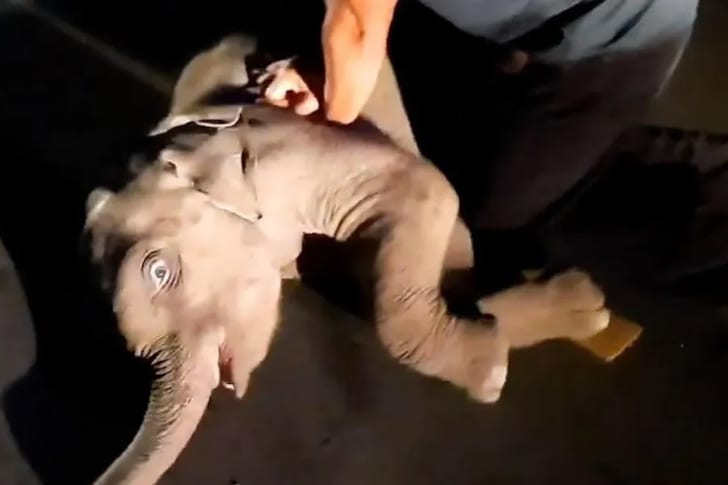
Fortunately, someone took the time to record the unusual yet heartwarming attempt to keep the calf alive. It wasn't long before the video that was shared online went viral on social media the next day in Thailand, and soon it made rounds across the world.
The minute-long clip shows Srivate performing the chest compressions on the calf. Other onlookers at the scene are also seen trying to help amid the commotion at the scene. For the first couple of minutes, the calf seems lifeless, but Srivate continues with the chest compressions.
The Human Theory

Srivate explained that he based his approach using human theory as a point of reference. He figured that since the human heart is located on the chest's left side, it must be the same case for elephants. Srivate had also turned to the internet for some help to locate the position of the calf's heart.
An elephant's heart accounts for 0.5% of its total body weight. While most mammals (including humans) have a heart with a single-pointed apex, elephants have double-pointed apexes at the base of their hearts. That makes their hearts appear more circular in shape as opposed to heart-shaped.
The Baby Elephant Starts Moving

An elephant's heart beats much slower at 25 to 30 beats per minute compared to our hearts at 70 beats per minute. The creature also has to maintain high blood pressure because some of its vessels measure over three meters in length.
Older elephants are susceptible to conditions that come with age, including cardiovascular diseases, and they are known to suffer from heart attacks. Srivate kept on performing CPR on the calf, and then he explained that he felt the elephant start to move. He said that he almost cried at that moment.
Up In 10 Minutes
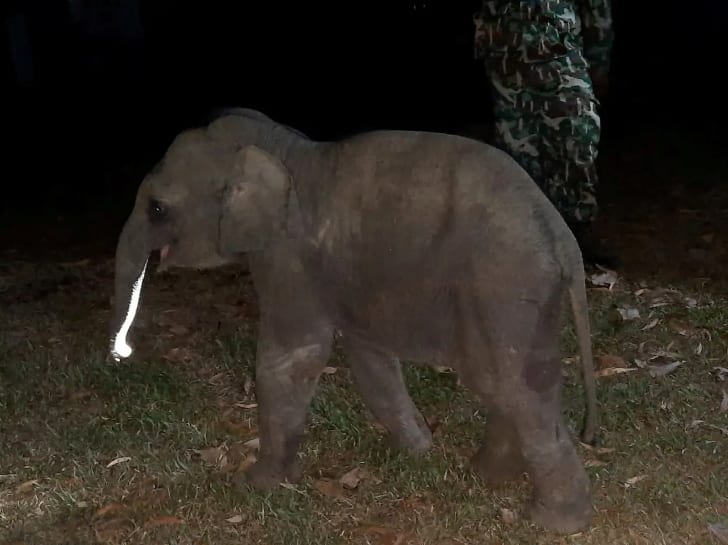
It took a tense 10 minutes for the elephant to get back up on its feet. Srivate and the other men on site are then seen loading the elephant inside a waiting vehicle. The calf was taken somewhere else for further medical assistance.
A sad fact about smaller elephants that are held captive in Thailand is that they are beaten into submission. Clubs and sharp bull-hooks are used to perform the cruel act of beating the elephants. The animals are also said to be subjected to sleep deprivation and starvation for several days. That should make anyone think twice about enjoying an elephant ride while visiting the country.
Reunited With Its Mother
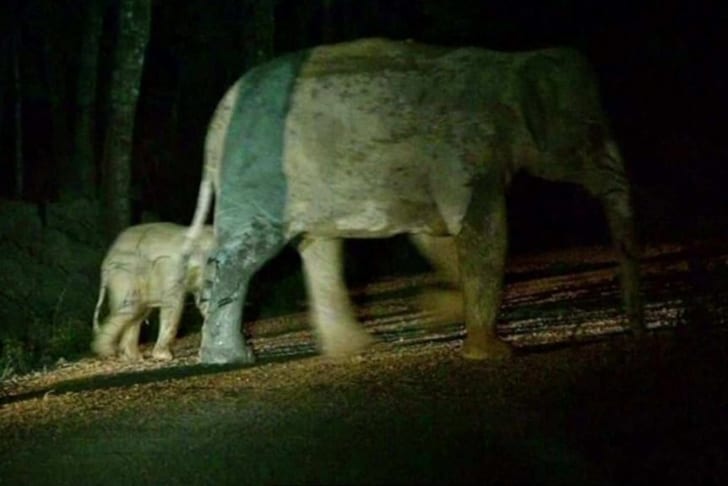
The silver lining at the end of it was that the calf and its mother were soon reunited. After the small elephant received medical help at a different location, the rescuers returned the mammal to the scene where its mother had presumably been waiting.
A heartwarming photo captures the calf and its mother walking back to their habitat. Visitors are encouraged to visit sanctuaries like the Elephant Nature Park (ENP) tucked away in the Northern Thailand jungles. The ENP strives to protect and care for elephants that have been subjected to mistreatment. They also work on increasing awareness of sustainable elephant-friendly tourism.
Recovering Well
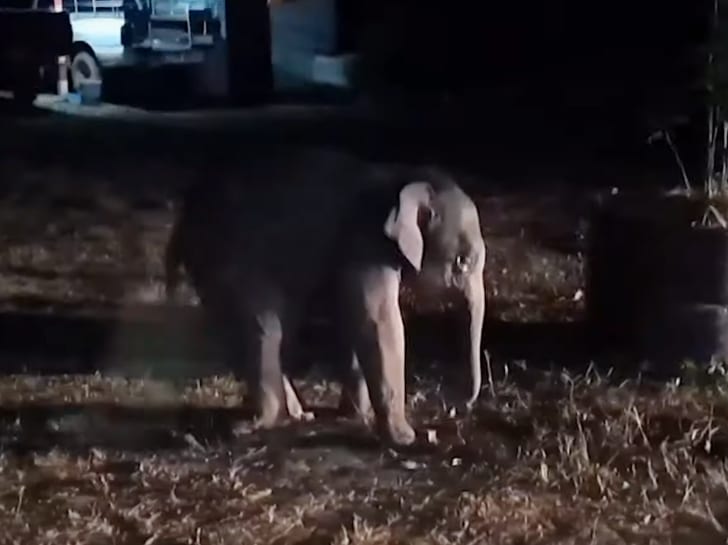
Thankfully, the motorcycle operator involved in the collision didn't sustain serious injuries from the incident. The update about both the calf and motorcyclist is that they are doing well after the encounter. For the greater elephant population in Thailand, the COVID-19 pandemic has endangered their future.
The populations of domesticated elephants, estimated at 1,000 in number, have been put out of work owing to the drastic drop in tourism. Operators are having challenges keeping the animals fed, and it's estimated that it costs $40 every day to feed just one of these creatures.
The Way To Interact With Wildlife

Srivate's actions inspired several people who came across the viral video. Laetitia Cavinato shared that it was a nice story, and she congratulated Srivate. Cavinato added that his actions embody how mankind should interact when they encounter wildlife.
Cavinato also pointed out that the elephants are smart, which is evident from the fact that they stood in wait nearby throughout the ordeal. The calf's mother also didn't leave the scene for the entire duration that the smaller elephant had been taken away from the scene until its return.
Live Harmoniously
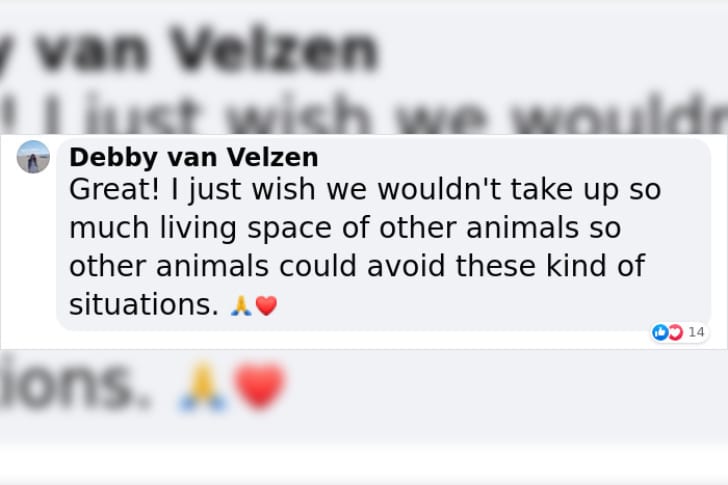
Debby van Velzen shared her concerns about humans encroaching on the already limited living space wildlife have. The population of Thailand's captive elephants exceeds the available space to rare them, and the same applies to those in captivity, which presents similar problems like this one.
Sanctuaries like the ENP offer adequate space to house their elephant populations and hence provide them with a better quality of life. The ENP offers 250 acres of wilderness for the 36 elephants that are housed in the sanctuary. Tourists can still interact with elephants at the sanctuary in fun activities like feeding them fresh fruit or bathing them at the river.
The Calf Will Never Forget

Gordon Yap shared that the smaller elephant will likely never forget about the interaction with the rescuers who didn't panic. Srivate's quick-thinking made the difference and might have been the crucial aspect that saved the calf's life.
They say that elephants never forget, and it all has to do with their brains. An elephant’s temporal lobe, which is the region of the brain that handles memory, is denser and larger compared to ours. That's where the saying comes from, and in this case, the calf relates it to a good memory.
The World's Largest Land Mammal
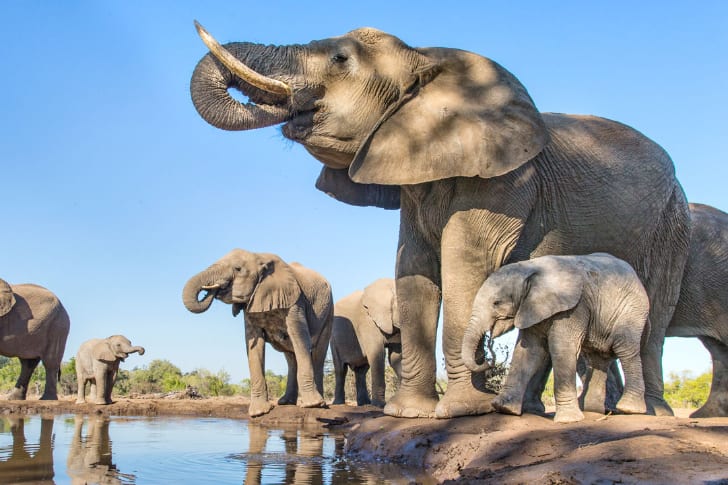
Elephants, native to Africa, to be precise, are considered the largest land mammals. The males average three-meter heights, and they can weigh as much as six tonnes. The males grow to their full size when they are 35 to 40 years old.
The lifespan of a wolf elephant is estimated at 60 to 70 years old. Even the calves are equally as huge. At birth, an infant elephant can weigh as much as 265 lbs. Two species of pachyderms exist, and that's the Asian and African elephants. Their ears distinguish them apart, with the Asian elephants possessing ears that apparently resemble the Indian subcontinent.
An Endangered Species
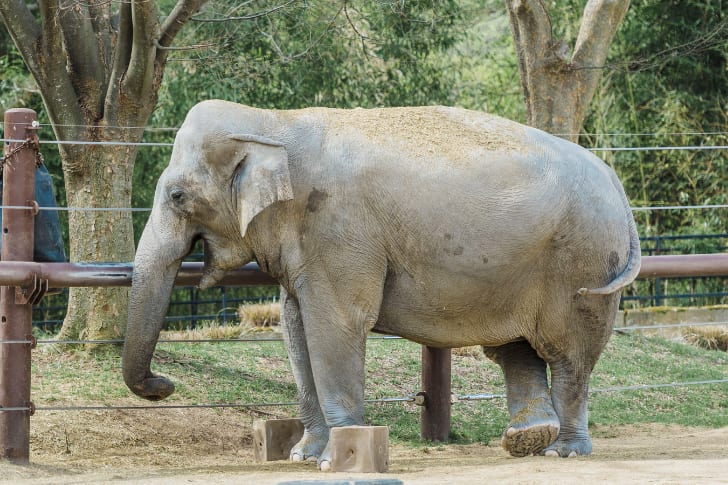
Elephants faced extinction in the '80s when they were illegally put to work within the logging industry. Pachyderms have about 150K muscle units within their trunks, which is the most sensitive organ the animal has.
Asian elephants have been observed picking peanuts, shelling them, and then blowing the shell out using their trunks. They use their trunks to suck up the water they need to drink. In the past, their trunks also helped in ferrying logs. The situation became drastic, and that's when they were included in the 1986 endangered species list.
Tusks For Teeth?
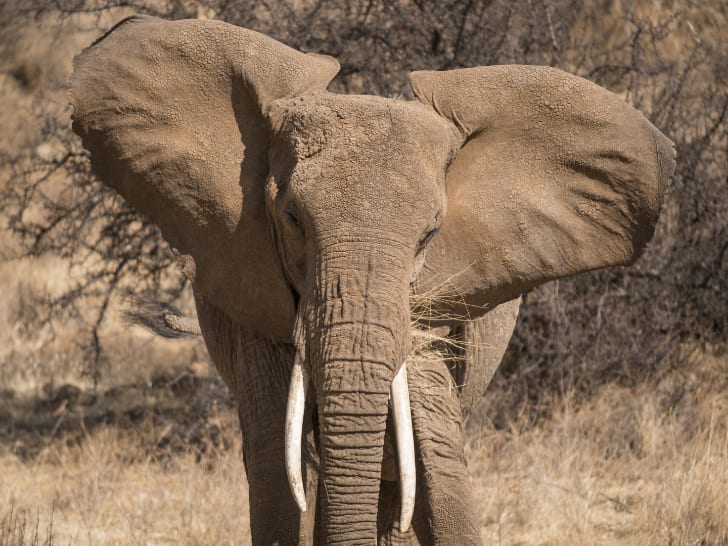
The elephant’s tusks are, in actual sense, an enlarged incisor tooth. They appear when a calf is two years old and continues to grow throughout the pachyderm's life. The mammals also use their tusks in the process of feeding by digging up roots or prising the bark off of a tree.
The tusks are also handy weapons whenever an elephant faces danger and needs to defend itself. On the other hand, tusks are the reason why elephants rank high on the list of poaching targets because of their ivory composition. Elephants also rely on the six sets of molar teeth they have to eat.
Thick Skin
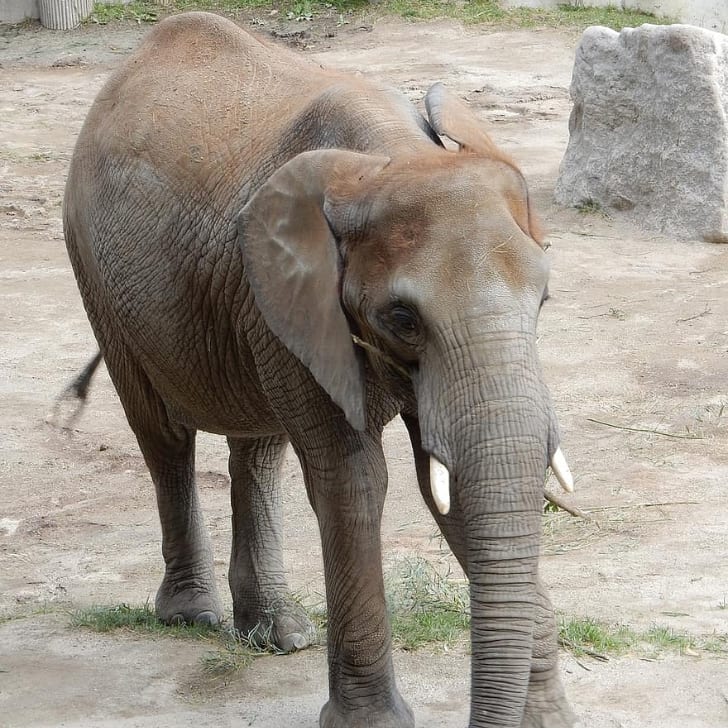
Elephants have 2.5 cm thick skin in most places. The wrinkles and folds they have throughout their body retain as much as 10 times more water compared to the areas where they have flat skin. The wrinkled skin helps keep them cool.
The mammals also regularly take mud baths to clean their highly sensitive skins and protect themselves from sunburn. The mud baths also help prevent their skins from losing moisture, and it offers them some relief from insect bites. Despite their huge stature, the soft padding on their feet helps them move silently while also protecting them from slipping and supporting their weight.
Good Vibrations
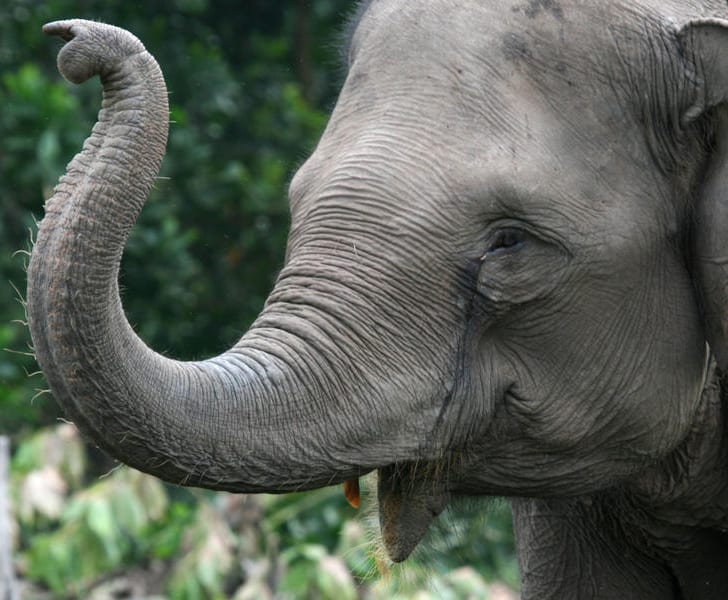
Elephants, much like humans, communicate in different ways. They produce trumpet calls, and sometimes the sound is in a low register that people can't hear. They also communicate through scent, touch, and body language.
Elephants also communicate using seismic signals, which are sound vibrations that pass through the ground. Pachyderms can pick up on seismic signals through their bones. Combined, it all makes up for the elephant's poor eyesight. They also have an amazing sense of smell, and they can pick the scent of water from as much as 12 miles away.
Sensitive & Compassionate
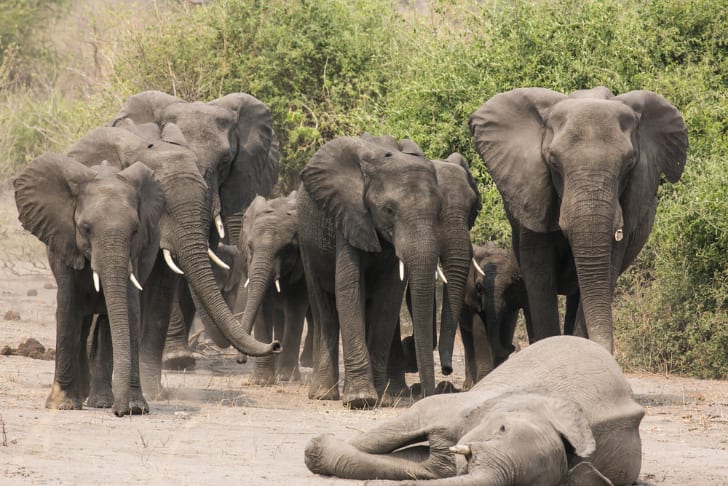
Elephants are also said to be caring and sensitive animals. They have been observed to show a range of what we consider as emotions while playing and performing other activities. They most notably express compassion while grieving.
Pachyderms have been observed grieving by gently touching the tusks and skulls of the dead using their feet and trunks. They have greeting ceremonies they perform when they meet up with friends who have been away for long periods. Elephants also have a way of hugging, and they do it in the form of wrapping their trunks together.
Mirror Image

Elephants can recognize their reflection in mirrors. It proves that they have a high level of self-awareness, which is something we often see in apes, magpies, cetaceans, and humans. Pachyderms also have certain patterns of behavior that mirror what humans experience.
For instance, they sometimes develop depression and patterns that look like post-traumatic stress. They are also recognized as one of the most intelligent animals, and the matriarchs rely on their great memory during the dry seasons to guide herds to watering holes that they had visited in the past. They can also perceive human voices and different languages, which helps them know if they are facing danger.
They Support New Life
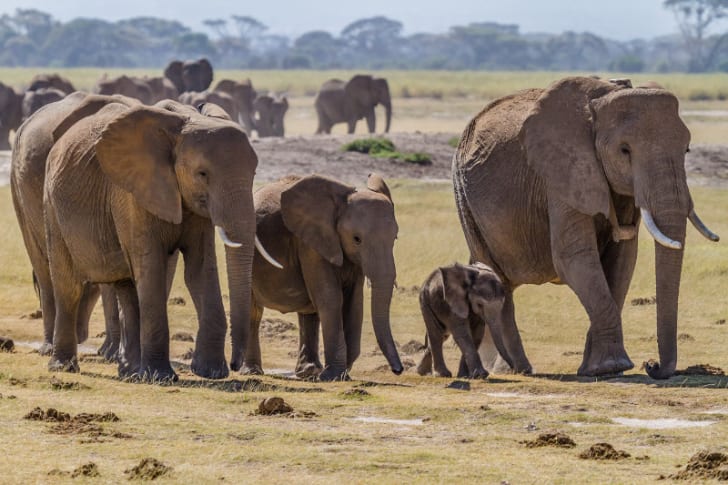
Female elephants stick with their family groups their whole lives, and the eldest female serves as the group leader. Female elephants have a two-year-long gestation period, which is the longest amongst all mammals. Male elephants depart from their herds at the age of 12 to 15.
Males that leave their herds start their lives alone, but sometimes the males that leave a group may form small groupings with other males. Overall, elephants play a vital role in shaping natural Asian and African ecosystems. They create clearings in wooded areas they pass through, allowing light to penetrate through such areas and in turn sprout new vegetation.
A Bright Future
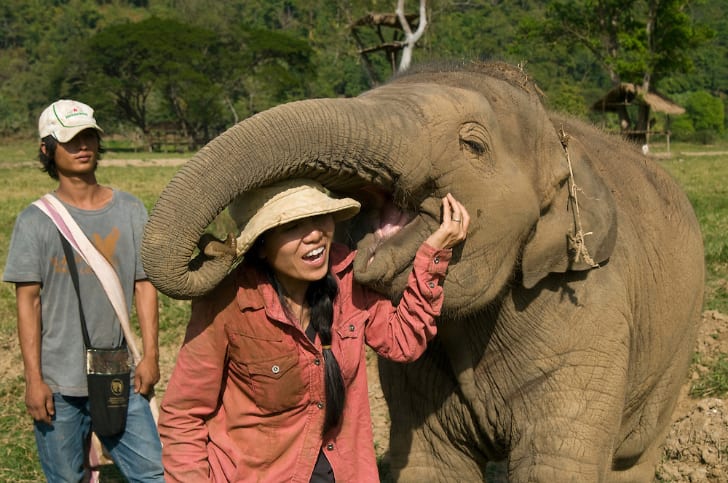
According to the Thailand Wildlife Conservation Office's director, Soontorn Chayawattana, the elephant population in Thailand has been steadily increasing due to conservation efforts. The country has seen a 7% increase in the wild population of elephants, and they anticipate that the number will rise in the next decade by 670 to 680.
Census data conducted on the population of wild elephants has also helped the DNP plan to manage food and water resources to support the future elephant generation. That means that the future of elephants in the country is bright.
